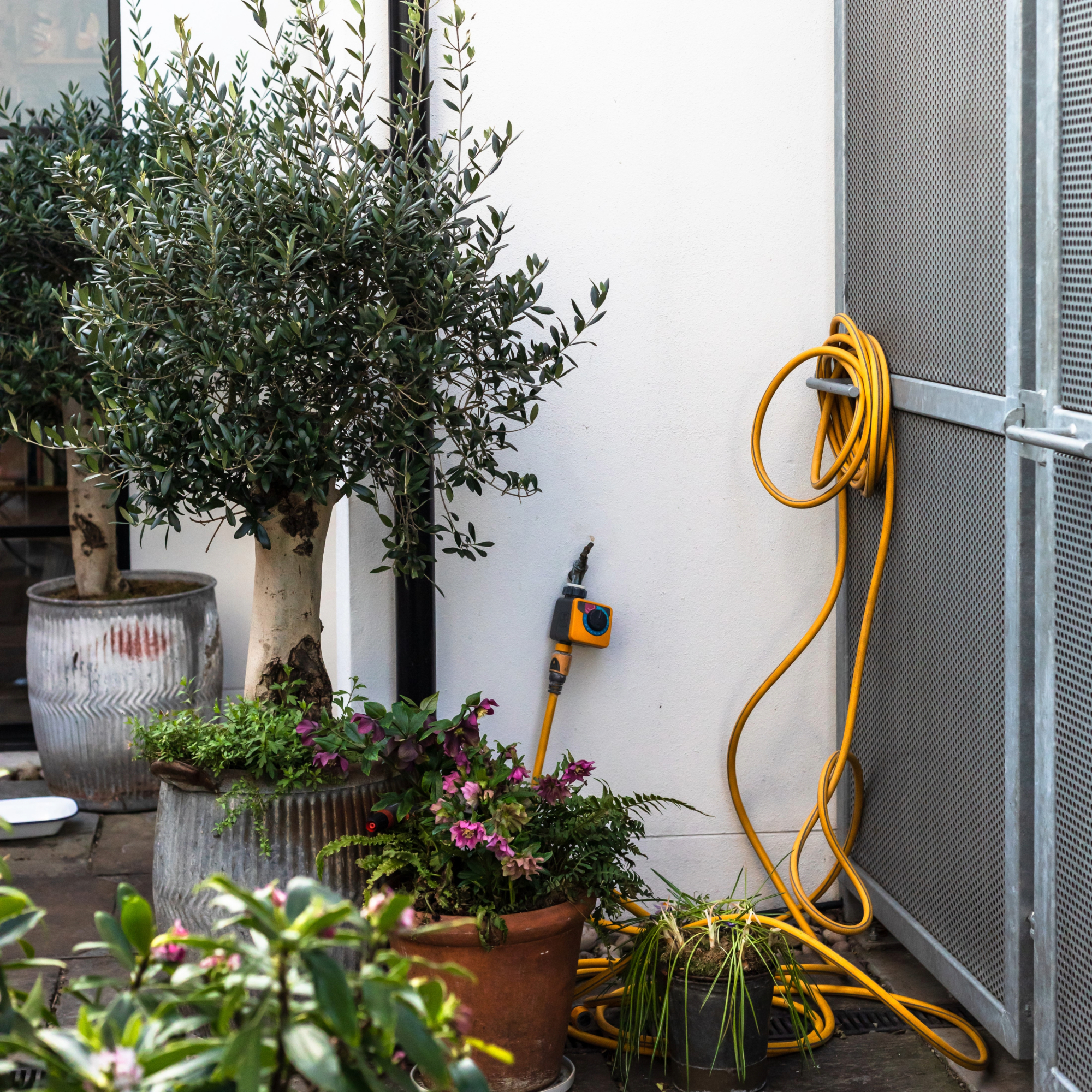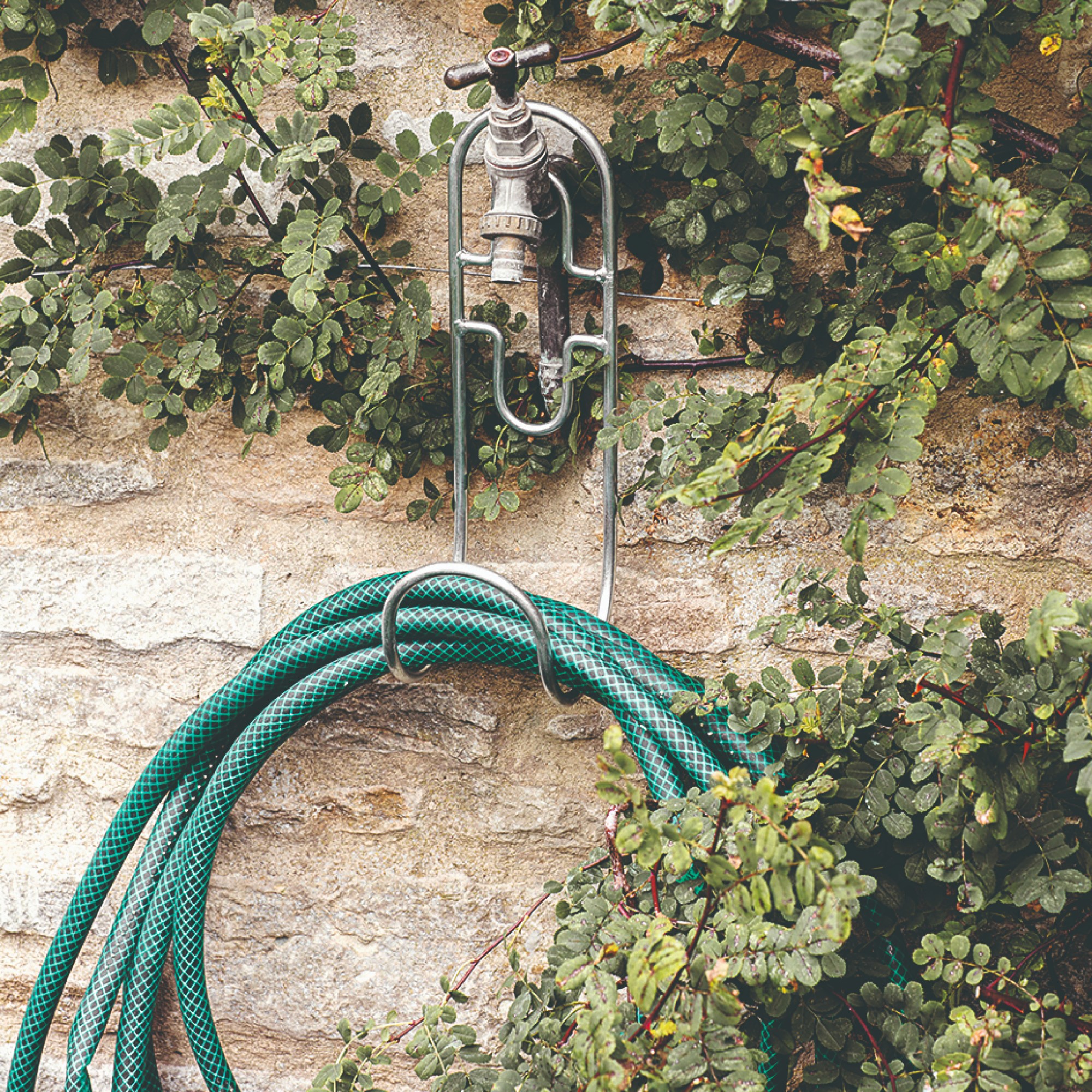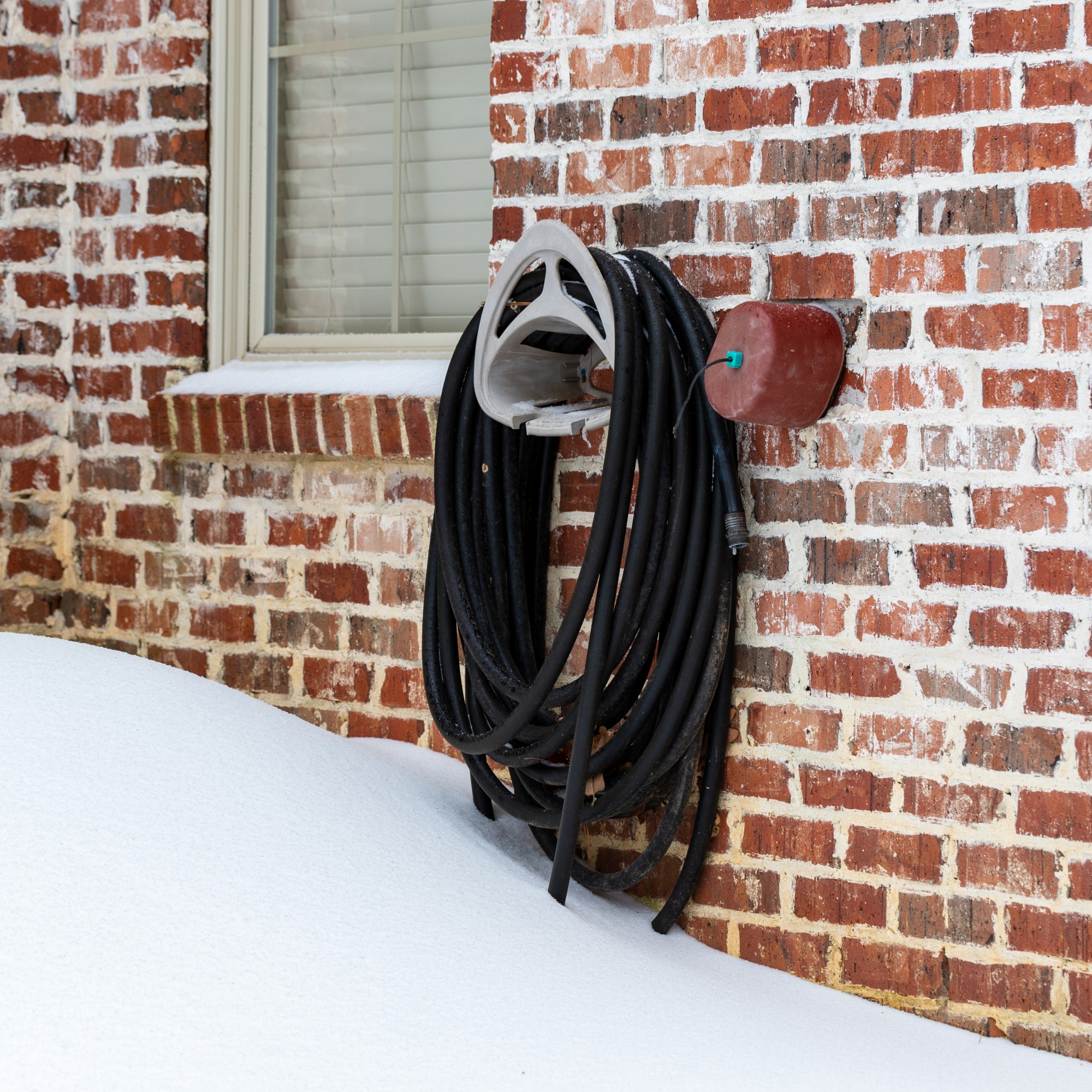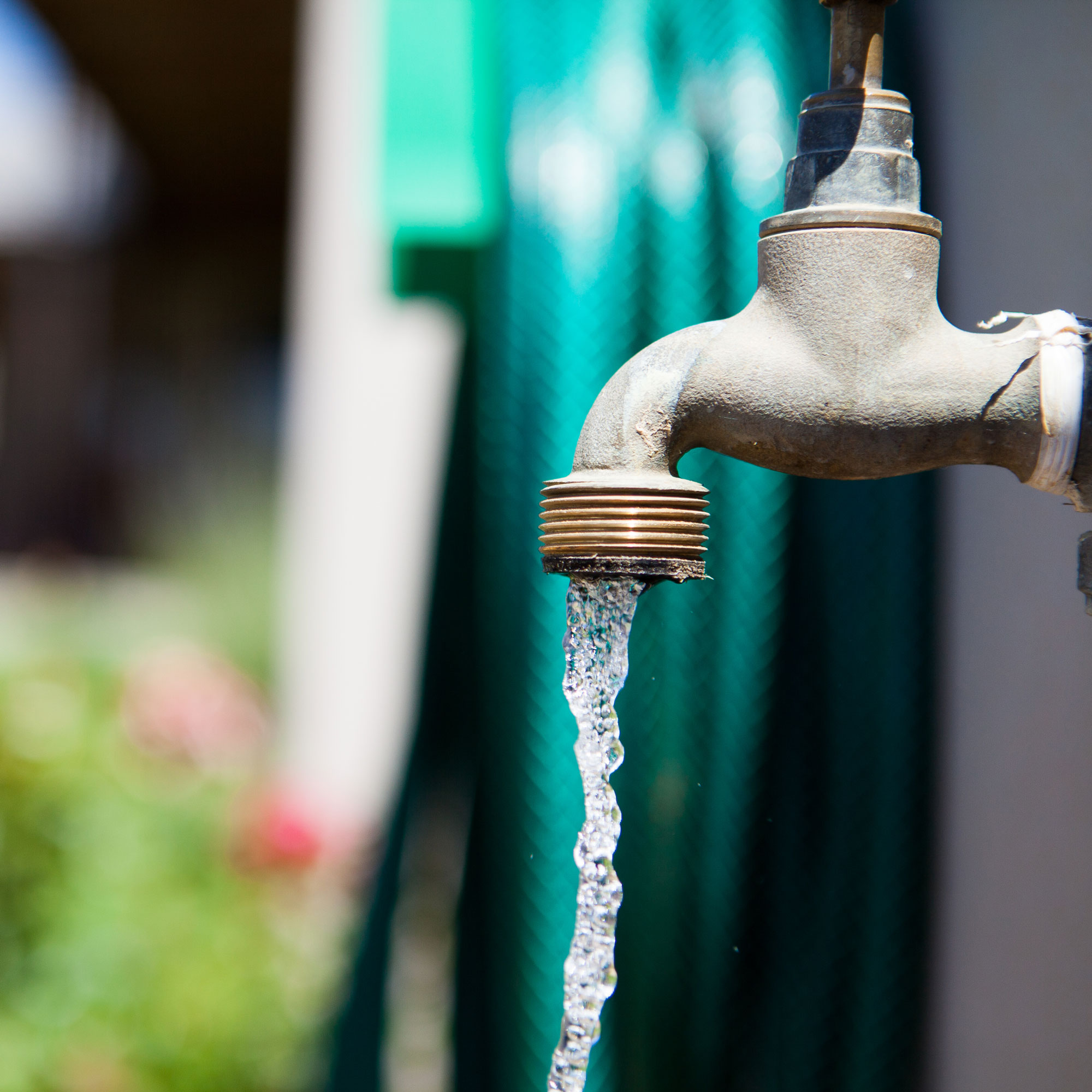
Whether you want to water your beloved plants or simply wash down your patio, a garden hose can be extremely handy. But if your garden hose has been underperforming recently, you might be wondering how to increase water pressure in a hose.
As the little brother to the best pressure washers, the garden hose is an essential addition to any idea garden idea. It can prevent garden watering mistakes and make watering or cleaning your outdoor space a breeze. And while they’re not as powerful as pressure washers, you still have the right to expect consistent water pressure from your garden hose.
As Sean Lade, Managing Director at Easy Garden Irrigation, says, ‘A reasonable flow rate for a garden hose would be between 10 - 15 litres per minute, or above 15 litres per minute for a truly effective flow rate.’ If you have less than that, you have a problem - and you need to fix it.

1. Check for twists or kinks
Sometimes, you may have low water pressure in a hose because there’s a problem with the hose itself. And when you’re wandering around your garden and using a hose to water every inch of outdoor space, it’s easy for it to become twisted.
As Sean says, ‘Severe kinks or twists can interrupt the water flow,’ and in extreme cases, the water flow may be cut off entirely. Because of this, you should find the twists or kinks as soon as possible and straighten them out.
‘To fix any kinks and twists in your hosepipe, you can either try to massage the kink by rolling the pipe between your thumb and fingers, or you can cut the hosepipe and repair using a hose repair connector,’ advises Sean.
Fixing this issue should increase the water pressure in your hose. But if this doesn’t fix the problem, you may have a bigger issue.
If you need to cut out the kinks in your garden hose, you can use this repair connector to fix it. This one will fit hoses between 12.5mm - 15mm in diameter.
2. Look out for leaks
While it may be low down on your list of priorities, it’s essential that you take care of your garden hose. You need to store it properly, you need to clear it of water after every use, and you need to protect your garden hose in the winter.
If you don’t, it may spring a leak, which can result in poor water pressure. So, it’s a good idea to look out for leaks every now and then and fix any holes or splits before they get worse.
Sean advises, ‘You can use a hosepipe repair connector, which can connect the pieces of the hosepipe together once the section with the leak has been removed. Otherwise, strong duct tape can do the trick as a short-term solution.’
This waterproof tape can be fixed over any holes or rips in your garden hose, increasing the water pressure and preventing further pressure loss. Just be warned that this shouldn't be a long-term solution.

3. Upgrade your hose
One of the best ways to increase the water pressure in your hose is to use a specialised pump - like this Hozelock Garden Jet Pump from Amazon. But this can be pretty expensive and may be too strong for everyday use. So, Sean suggests upgrading your hose instead.
He says, ‘You can't increase water pressure without a mechanical intervention like a pump, but you can better maintain what water pressure you have by using a hosepipe with a larger diameter.’
In fact, a hose with a larger diameter will reduce the water resistance while increasing the water pressure, while a hose with a smaller diameter will increase the water resistance and reduce the water pressure.
‘That's why the pros always choose a 3/4" hosepipe or in some cases, they go for a 1” hosepipe if they are using lengths of hose greater than 50 metres,’ Sean adds. ‘Consider this if you are an avid gardener and hose pressure is a recurring issue for you.’
Just make sure that you choose a good-quality hose. Sarah Bentham, gardening expert and UK Marketing Manager at GARDENA says, ‘They should be both UV and frost proof so they can withstand all weather conditions without damage, which will not only help maintain pressure but allows them to be left outside all year long.’
This 3/4 inch garden hose should be the perfect diameter to maintain water pressure, and you can even choose between a 20m length or 50m length.
4. Reduce the length
If you’re lucky enough to have a big garden, you may struggle with low water pressure in your hose more than those with smaller gardens. After all, the further the water has to travel, the lower the water pressure will be.
That’s why Sean suggests reducing the length of your garden hose to increase the water pressure. However, this might make watering a large garden more difficult, so you need to weigh up the pros and cons of your specific situation.
Sean says, ‘This option is mostly suited to smaller gardens, but if you are looking for a simple way to increase garden hose water pressure with a quick fix, this method can do the trick.’
Alternatively, you could reduce the length of your garden hose for the majority of your garden to maintain a high water pressure - and then use a watering can or utilise smart watering to water the areas that your hose won’t reach.
If you opt for a shorter garden hose but can't quite reach the plants at the back of your garden, this watering system can help you out and keep your plants hydrated throughout the summer.

5. Check the pressure at the mains
In some cases, the problem with your hose pressure might not be with the hose itself. Instead, you might have a problem at the mains.
It may be that there’s a problem with your water supply, you haven’t turned it on enough, you have a leak elsewhere in your house, or you have low water pressure as standard. Nevertheless, it’s still a good idea to check for any abnormalities.
Sean says, ‘You can check the water pressure by using a water pressure gauge, which will give you a better idea of your hose’s usual pressure and notice any changes.’
If you’re really concerned about your water pressure, it’s best to contact a plumber or your water supplier.
If you want to test the water pressure from your outside tap or in your home, this gauge can help you do that. It can also be used as a gas and oil pressure gauge.
6. Clean the hose
If you want to increase the water pressure in your garden hose, it’s well worth cleaning it - and Sarah agrees. She says, ‘Regularly checking hoses for any algae, mould and mineral deposits is key.’
Yes, just as you should clean your garden tools, you should also clean your garden hose to prevent the build-up of dirt that can ultimately cause blockages and affect the water pressure. Thankfully, this is easy to do.
Sean says, ‘To solve this, remove all accessories for the far end of the hosepipe and flush for 3-5 minutes.’ If you need an extra little push, you can also use a hose-cleaning brush to remove any stubborn build-up.
If this still doesn’t work, you could soak the hose in a mixture of white vinegar and water for 24 hours. This should soften any stubborn deposits and allow you to flush them out with ease.
This cleaning brush will allow you to clean all the way down into your garden hose, and allow you to get rid of any stubborn dirt, debris, or mineral deposits.
FAQs
Can you turn a garden hose into a pressure washer?
Buying attachments that turn your garden hose into a pressure washer is possible, but it’s important to note that this will not compete with a proper pressure washer.
After all, these attachments will simply use a smaller nozzle to concentrate the water on one specific area of your garden rather than increasing the pressure of your water.
If you want to drastically increase the water pressure in a hose, you should use a jet pump or booster that will serve as an extra driving force. Alternatively, just buy a pressure washer.
What is a water pressure booster?
A water pressure booster is a device that will increase the water pressure in your water system, which can be handy if you have low water pressure or want to use a garden hose to clean a patio or garden furniture that needs an extra boost.
You can buy either a small pump that attaches to your outside tap or you can buy a water pressure booster that connects to the mains of your house.
This means that the water pressure will increase across your whole property, from your taps and showers to your outside water taps.
Now you know how to increase water pressure in a hose, it’s time to give these quick fixes a try.







